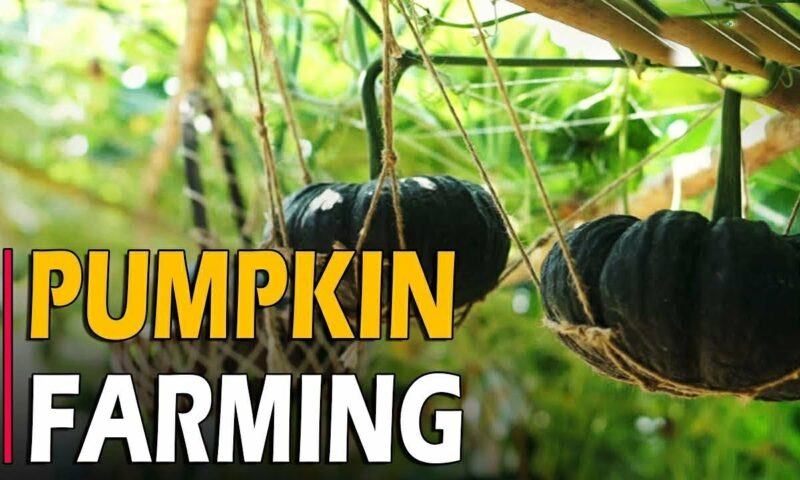By Spy Uganda
Did you know pumpkins have been grown for almost 5,000 years? It’s a lot of fun to grow this native plant.
Pumpkins do require a lot of nourishment. That said, pumpkins are easy to maintain.
How To Plant
Pick a spot in full sun with space for sprawling vines to run: 50 to 10 square feet per plant. If space is limited, plant at the edge of the garden and direct vine growth across the lawn or paths. Vines will be bothersome for only a few weeks. In a very limited space, grow pumpkins in 10-, 12-, and 15-gallon buckets (depending on variety) or try miniature varieties. Pumpkins are heavy feeders! It’s important to mix aged manure and/or compost into the soil.
When To Plant Pumpkins
Pumpkins are sensitive to the cold. Do not sow seeds directly until well after the danger of frost is past and the soil is between 65° and 95°F (18° to 35°C). If the soil is at 70°, seedlings should emerge in 5 to 10 days. For cooler climates, this is often in late May. Our Planting Calendar shows you the FIRST planting date for your location.
How To Plant Pumpkins
Plant in rows 6 to 10 feet apart. Or, plant in hills 4 to 8 feet apart. A hill does not mean the soil has to be mounded; it’s a spot containing a group of plants or seeds. Hills warm soil quickly (so seeds germinate faster) and aid with drainage and pest control. Prepare hills by digging down 12 to 15 inches and mixing/filling in with lots of aged manure and/or compost.
In rows, sow seeds 6 to 12 inches apart. Once seedlings are 2 to 3 inches tall, thin to one plant every 18 to 36 inches.
In hills, set seeds 1 inch deep with four or five seeds per hill. Keep seeds moist until germination. When seedlings are 2 to 3 inches tall, thin to two or three per hill by snipping out unwanted plants.
If sowing indoors in peat pots, harden off seedlings before transplanting into warm, aged manure/compost-enriched soil.
Growing
Use row covers to protect plants early in the season and to prevent insect problems. However, remember to remove covers before flowering to allow pollination.
Bees are essential for pollination, so be mindful when using insecticides to kill bugs or fungicides to control fungus. If you must use it, apply only in the late afternoon or early evening, when blossoms are closed for the day. To attract more bees, try placing a bee house in your garden. Or, grow colorful flowers near the patch.
Pumpkins need 1 inch of water per week. Water deeply, in the morning and on very hot afternoons, especially during fruit set. Avoid watering foliage and fruit unless it’s a sunny day. Dampness invites rot and disease.
Add mulch around your pumpkins to retain moisture, suppress weeds, and discourage pests.
Weed gently; pumpkins have shallow roots that can be easily damaged. Also, take care not to damage the delicate vines; the quality of the fruit depends on them.
Pumpkins are heavy feeders. Side-dress with aged manure or compost mixed with water. When plants are about 1 foot tall, just before vines begin to run, fertilize regularly with a high-nitrogen formula. Just before the blooming period, switch to a high-phosphorus formula fertilizer.
Harvesting
Your best bet is to harvest pumpkins when they are fully mature—and not before. They will keep best this way. Do not pick pumpkins off the vine because they have reached your desired size. (If you want small pumpkins, grow a small variety.)
Harvest on a dry day after the plants have died back and the skins are hard.
The skin of a ripening pumpkin turns a deep, solid color (orange for most varieties) and the stem hardens.
Thump the pumpkin with a finger; the rind will feel hard and sound hollow. Press a fingernail into the pumpkin’s skin; if it resists puncture, it is ripe.
Carefully cut the fruit off the vine with a sharp knife or pruners; do not tear it. Be sure not to cut too close to the pumpkin. Leave 3 to 4 inches of stem to increase its keeping time.
To toughen the skin and intensify flavor, cure pumpkins in a sunny spot for about 10 days in an area that is 80º to 85º F, with 80 to 85% humidity. This is a great time to display your pumpkin on the front porch! If you’re carving a pumpkin, carve no more than 3 days before Halloween or the pumpkin will begin to rot.
After curing, store pumpkins in a cool, dry cellar or root cellar or the like at 50º to 55ºF for 2 to 3 months.
Properly saved seeds should last for 6 years.
Be aware that poor light, too much fertilizer, poor weather at bloom time, and reduced pollinating insect activity can result in poor fruit set, shape, and excessive blossom drop.





